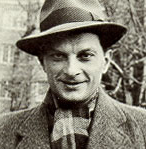

Stanislaw Ulam was born on April 3, 1909 in the city known at the time as Lemberg Poland, and now Lvov Ukraine. He was educated at the local gymnasium, and showed an early interest in mathematics and physics, studying calculus and set theory. He received the doctoral degree from the Polytechnic Institute in Lvov in 1933, working on a problem originally posed by Henri Lebesgue. In 1935, Ulam visited the Institute for Advanced Study at Princeton University to work with John Von Neuman, and in 1940, accepted an assistant professor position at the University of Wisconsin.
In 1943, Ulam became a US citizen and began working at the Los Alamos National Laboratory on the problem that would make him famous: the hydrogen bomb. Ulam and Edward Teller solved the problem of using a fission reaction to initiate fusion, a critical feature in the design of the thermonuclear weapon. Ulam remained at Los Alamos until 1965 when he was appointed the chair of mathematics at the University of Colorado.
In mathematics, Ulam worked on problems in set theory, topology, measure theory, and ergodic theory. In probability, Ulam is important because of his contributions to the foundations of probability and to the Monte Carlo method: using statistical sampling to find approximate solutions to otherwise intractable problems. This method was important in the development of the hydrogen bomb, because the computing machines at the time were primitive. His books include
Ulam died on May 13, 1984 in Santa Fe, New Mexico, USA.